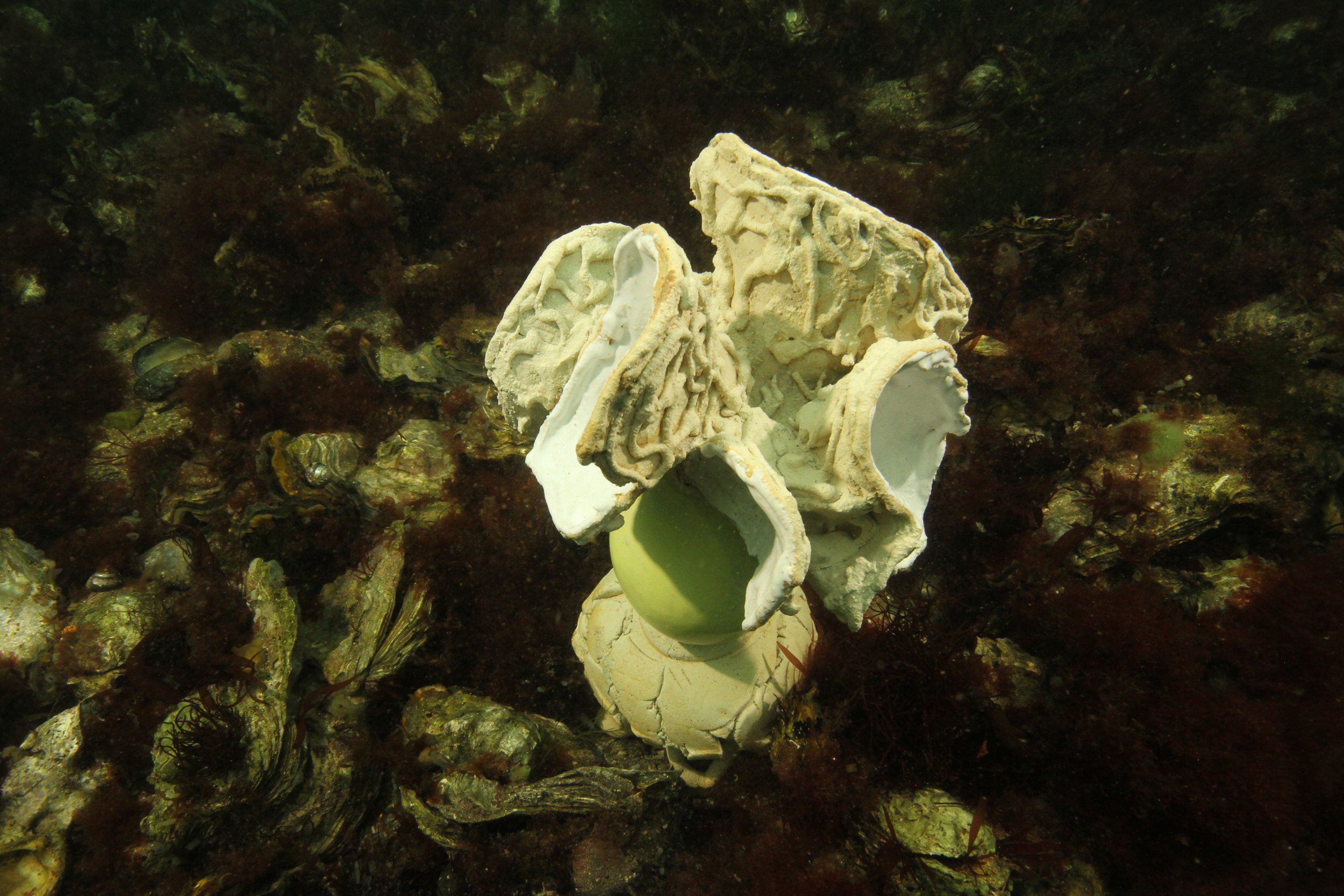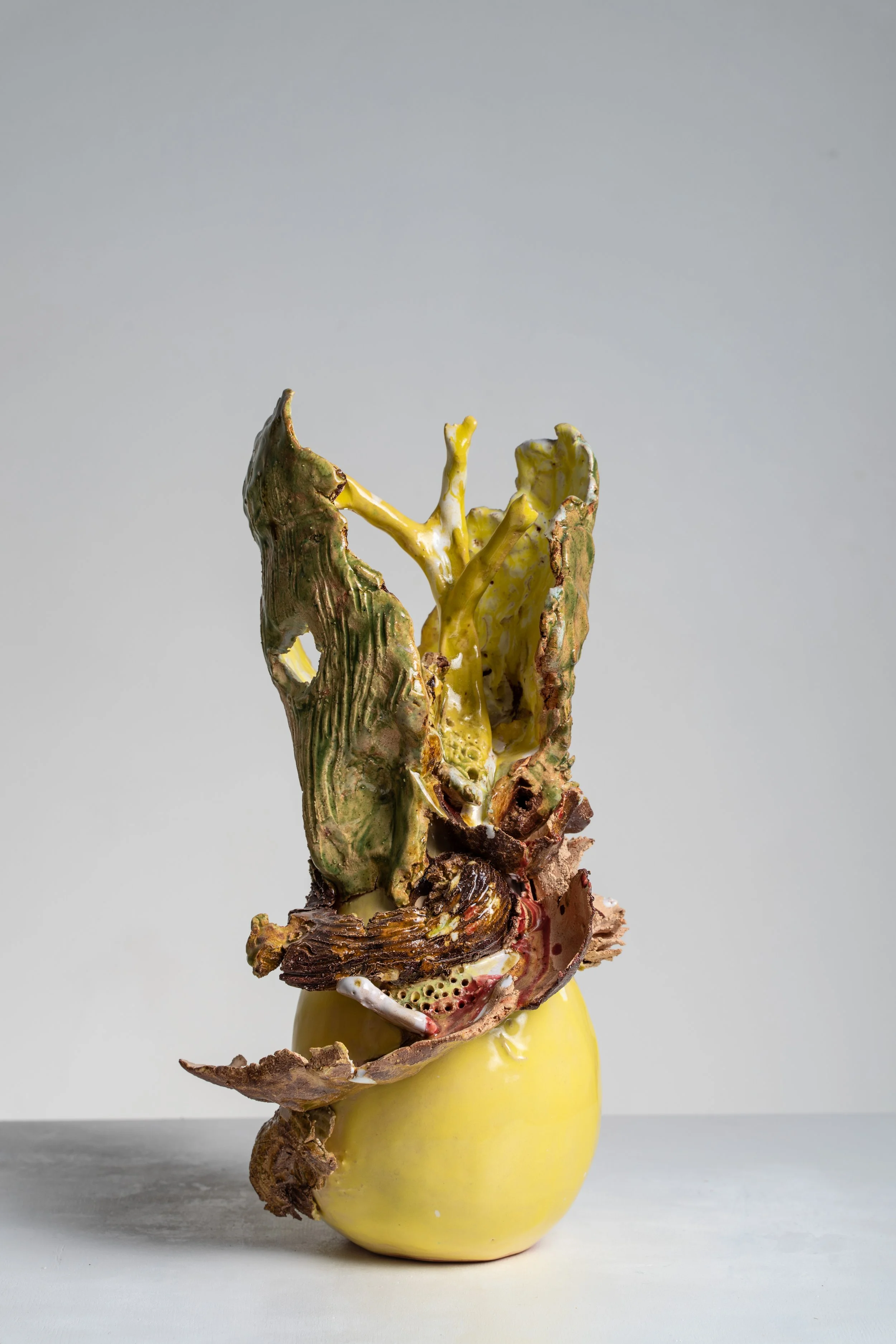Funeral home: The North Sea
Squatter of the North Sea - documentary about Jonat’s underwater art project - by Peter Balm, Pim Havinga and Jonat Deelstra - 2025
Jonat Deelstra at work during his residency at the EKWC.
Jonat sees this project as a rebirth
〰️
Jonat sees this project as a rebirth 〰️
Deelstra: ‘In the North Sea, there is tremendous fertile potential. Small anemones, sea lilies, sea urchins, and dead men’s fingers cling to new artificial installations on the seabed. Underwater flora and fauna thrive alongside wind turbines, shipwrecks, and drilling platforms. In the vast majority of the North Sea, fishing continues at an enormous scale. Shamefully, businesses and governments view this natural area as an industrial site. In the North Sea Agreement, which was signed in 2020, it was agreed that 15 percent of the Dutch North Sea floor should be protected by 2030. But today, we’re nowhere near that goal. As far as I am concerned, conservation is moving far too slowly.’
Jonat wants to get a head start on preserving the North Sea by installing maritime ceramic graves in places where there is a lot of trawling. The cemetery will be located at the Burkumse Stenen. The North Sea location he wants to transform is officially a protected area, but the government is not ensuring protection against overfishing and trawlers. His sculptural underwater graves, including dead human bodies, would protect the area by law since it’s illegal to disturb a human cemetery. The death vessels are constructed during his three-month residency in the most experienced ceramic workshop in the Netherlands: the European Ceramic Work Center (EKWC). The underwater coffins and vessels are designed to provide an ideal habitat for oysters and mussels to settle and thrive. By placing graves close to one another, the sculpture garden will evolve into a sacred reef. It will attract new flora and fauna. As more people use Deelstra’s service, the reef will grow exponentially and attract larger marine life. The graves and sculptures will become completely overgrown with organisms and burst with life.
Several prototypes are submerged underwater to observe how the North Sea reacts to its artificial material. Divers capture the process with underwater cameras. Deelstra: ‘When I first saw images of starfish crawling on top of the sculptures, I realized what I’d created. This is my cause! Meanwhile, my grandfather’s ashes are now resting on the ocean floor in Kenya, placed there by the non-profit organization REEFolution, in one of my ceramic urns. Rolf, my grandfather, now rests in the company of thousands of fish and young flourishing coral.’
At the moment Jonat is working on a short movie to complement the project and to show the research that went into this work. In the film, made by Peter Balm and Pim Havinga, Jonat examines the possibilities for actual implementation and enters into dialogue with relevant parties. He interviews marine biologists, funeral directors, the North Sea Foundation, environmentalist NGOs, divers, and the terminally ill to discover how he could realize his dream. In addition, he collaborated with the Wageningen University, Hortus Botanicus Amsterdam, the European Ceramic Workcenter, and the GoMulan Gallery to make this project succeed. The project is still in process since the coffins have not yet been placed. So keep following this page.
I left one prototype on the bottom of the Grevelingenmeer, in the south of the Netherlands. This is a saltwater lake, and has simular flora and fauna as the North Sea. The prototype that I left there has been planted at winter time. Therefore the organisms that are growing on it right now are mostly animals, no flora yet. That will probrably happen in the next months. The animals that are attracted by my sculpture are: Common periwinkle, Spirorbis spirorbis and Cancer pagurus.
Oyster coffins at Ceramic Brussels Art Fair - photo by: Hans Deelstra
Video produced by Jonat Deelstra, in collaboration with Hortus Botanicus Amsterdam and the Mondriaan Fund - 2022 - Editor and music by Phillip Pruijt
The project is supported by the Mondriaan Fund
















































